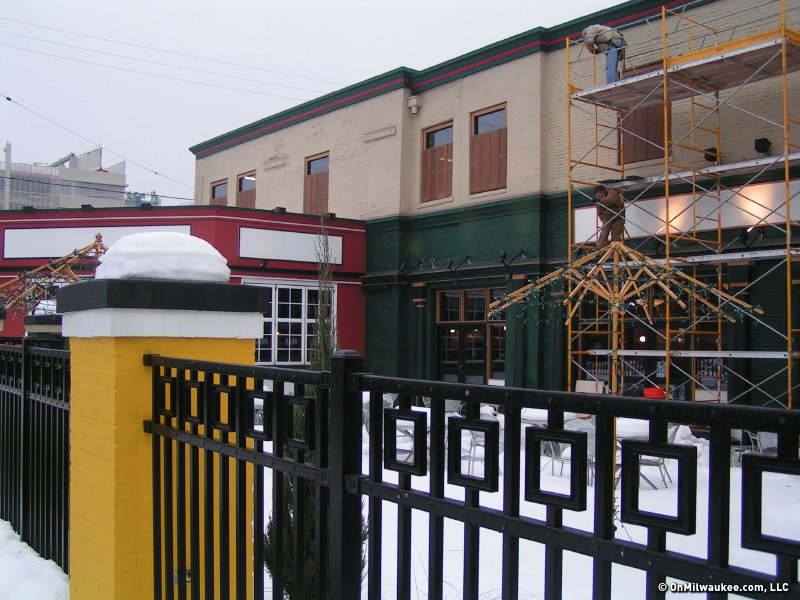{image1}Milwaukee is known as "Brew City" for all the beer, that's a given. But "Cream City?" The cream in question is not whipped and served inside a pastry at the State Fair, but rather in solid, brick form.
Cream City brick emerged from Milwaukee's kilns in the 1830s. The relatively high concentration of lime and sulfur in the clay found in the Menomonee Valley region created that creamy hue. Locally-produced, it became the least expensive "utility grade substance" of its day, making it a primary building block for churches, homes, factories and businesses for the next 70 years.
Milwaukee's position on railroads and its port on Lake Michigan allowed exportation of Cream City bricks for use in Great Lakes lighthouses -- including the charming one at Eagle Bluff in Door County's Peninsula State Park -- as well as commercial and industrial buildings in New York, Chicago and other American cities. They even made their way to Hamburg, Germany in 1859 on the M.S. Scott, noted as the second ship to leave Milwaukee for a foreign port. Architects overseas were interested, hence the Cream City brick that now graces a number of 19th-century buildings across Western Europe.
Milwaukee's pride in its brick showed in sports, too: a baseball club called the Milwaukee Cream Citys compiled 15 wins against 45 losses in 1878, foreshadowing much of Milwaukee baseball for centuries to come. Despite a sixth-place finish, the attendance of the final game that season was 17,000. At that time, Cream City bricks were being created at the rate of over 15 million per year.
Cream City bricks brought a lighter color to buildings when they were new, but its porous nature and softer face meant dirt, smoke, weathering and pollutants could easily penetrate, and by the early 1900s many of the buildings constructed with Cream City brick lost their luster.
Meanwhile, changes in supply and cost structures, coupled with access to other building materials such as concrete, led to a decline in Cream City brick production shortly after 1900.
Restoration projects brought by developers, architects, preservationists, and others resurrected neighborhoods as well as an interest in the brick. Attempts at sandblasting buildings in the 1970s proved more harm than good -- today, chemical composites restore the brick to its original look, as renovation projects across the city attest.
Cream City brick is "probably the toughest brick in America to clean because of its porosity," said Paul Jakubovich, a preservation planner in Milwaukee's Department of City Development.
Jakubovich notes that while Cream City bricks are "softer" than many other types, their toughness makes them among the most salvaged bricks for reconstruction. He points to a number of reconstruction projects in Arizona using Cream City bricks as an example. One can easily see from older buildings here in Milwaukee that the bricks hold up well.
So where are these Cream City brick buildings? The Blatz Brewery at Broadway and Juneau is one fine example, as is St. John the Evangelist Cathedral on Jackson Street.
{image2}Jakubovich also recommends the following:
St. Hedwig Catholic Church, 1702 N. Humboldt Ave. St. Hedwig's was founded by about 40 families in 1871. Long a Polish parish, its profile has diversified. One can inspect the brick, as well as other details of the church, closely from the sidewalks on Humboldt and Brady.
Trinity Evangelical Lutheran Church, 1046 N. 9th St. Built in 1878 right by the Pabst Brewery, the structure is also a great example of the 1870s German Romanesque/Gothic Revival style. Sandstone details outline the Cream City brick nicely; it's also worth a visit to see the 200-foot spire outside and the 1,600-pipe organ inside.
Matthew Keenan Townhouse, 777 N. Jefferson St. Built in 1860, this building survived a 1984 fire that gutted the inside but left the exterior brick intact, though smoke-damaged. Renovations brought out the brick's original look, and today the building is home to Dino's, an art gallery and retail shops.
Abel Decker Double House, 408-410 S. 3rd St. Common in older eastern cities, this is a fine -- and rare -- example of the Federal style double house in Milwaukee. It is a residential property, nearly surrounded by larger industrial buildings. Built in 1857 by grocer Abel Decker, its exterior -- including the Cream City brick -- was restored in 1993.






